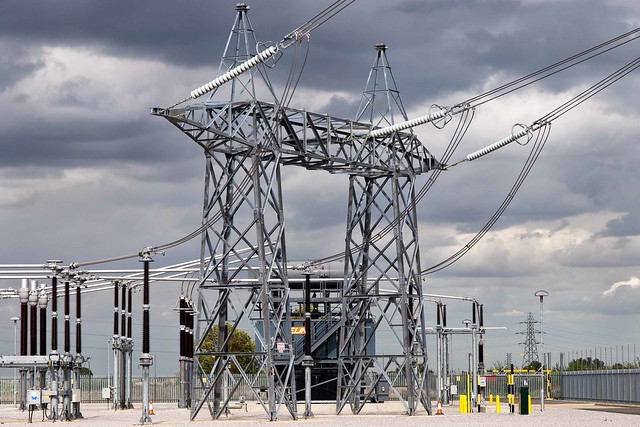How Rapidly Improving Technology is Helping to Create more Renewable Energy Options
There now seems to be a far greater sense of urgency regarding the need to develop reliable renewable energy options. The realisation that fossil fuels are depleting and our dependency on oil is such that the planet is not able to sustain us for evermore is helping to drive a host of new ideas.
Here is a look at some of the innovative ideas that are being developed so that we can hopefully reduce energy usage in the future.
Chemical energy storage
We all know that batteries act as chemical energy storage and are used in our everyday lives, bit they their capacity can be seriously up-scaled using the latest technology, allowing future energy generation to become more efficient and financially viable, by harnessing this power on a commercial level.

There are already a number of solar energy plants around the globe that are able to harness a high concentration of solar energy and then use an industrial-scale salt battery for thermal energy storage.
Having these large salt batteries in place means that the excess energy generated by the solar plant can be stored efficiently when demand on the grid is low and it is not needed and then subsequently released when demand increases at peak times.
Smart heating solution for UK properties
Just as it makes sense to save energy in our homes by installing insulation, it also makes sense to try and reduce our level of energy consumption in the first place. This is now possible with such new technologies as the Nest Learning Thermostat which is an intelligent solution that will help customers to reduce their energy bills by improving their usage efficiency. Nest was recently acquired by Google, and they have teamed up with npower who have developed a new tariff scheme that comes with Nest as a part of the bundle.
The product works by learning your preferred temperatures and adjusting your heating settings around this information and your regular daily schedule. The device connects to your phone or tablet and even has the ability to detect when the house is empty and adjust the temperature accordingly.

Vehicle-to-building technology
This new technology is being pioneered by the motor manufacturer Nissan and is aimed at companies who have a fleet of electric vehicles plugged into their on-site garages.
The vehicle-to-building technology essentially means that energy stored in the vehicles can be transferred to meet the buildings demands when not in use and then transferred back to the cars when needed. Storage innovations like these are set to grow as more forms of renewable energy are added to the grid.
Using the ocean waves
The UK would seem a good candidate for this technology given our proximity to plenty of water, so it will be interesting to see if we are able to take the lead from projects already underway in other parts of the world.
The U.S are the first to implement a commercial grid-connected underwater tidal turbine. The Ocean Renewable Power Company is attracting a lot of interested parties who want to use the technology for themselves.
A Japanese delegation recently visited the project to learn more about the technology. Japan is committed to producing 30% of its total power using offshore methods by 2030, so this procedure would help them achieve their goal.
Super-efficient solar cells
Conversion efficiency is all about what percentage of light hitting the solar cell is actually successfully converted into electricity.
The typical conversion percentage is somewhere between 18 and 24 percent but Silicon Valley solar manufacturer Alta Devices have just set a new record. They managed to achieve 30.8 conversion efficiency using ultra-thin solar cells that can generate a lot of electricity from a small surface area.

Smartphone and tablet manufactures are definitely interested in this development. It means being able to generate sufficient power to run your mobile and a whole host of other small devices like smoke detectors and remote controls by using these super-efficient solar cells.
Waste into power
The commercial production of clean energy from plant waste is now a reality.
Ethanol derived from corn was once regarded as a climate-friendly alternative to gasoline. There are now conflicting arguments as to whether it actually releases any less carbon dioxide when you evaluate its full life cycle.
Cellulosic biofuels are now being seen as a more eco-friendly option for turning waste into power. There are more cellulosic plants being planned and the current annual target of 17 million gallons is a figure that industry experts believe will be easily surpassed in the next 12 months.

Floating wind turbines
Standard wind turbines require extensive construction and are limited to waters that are no more than 60 meters deep.
This puts a restriction on the amount of offshore real estate available for development but the coast of Scotland is playing host to a viable solution, the floating wind turbine. A Norwegian-based company Statoil have begun work on creating a hub of floating wind turbines just off the coast of Aberdeenshire.
The turbines require just a few cables to keep them anchored and crucially, they can be placed in water up to 700 meters deep.
This opens up the opportunity to create huge floating wind farms that can generate a substantial amount of renewable energy in the future. The hub based off the Scottish coast will be the largest in the world and Japan are even working on a similar idea. They are creating the world’s first floating electrical substation.
Rapid advances in technology are helping to provide some reassurance that we may well be able to provide the energy resources that we need in the future.
Madeleine Lucas has been working with technology for decades. With an eye for energy concerns and emerging renewable tech, she enjoys blogging about the practical applications of research and new technological ideas.


0 Comments
Recommended Comments
There are no comments to display.